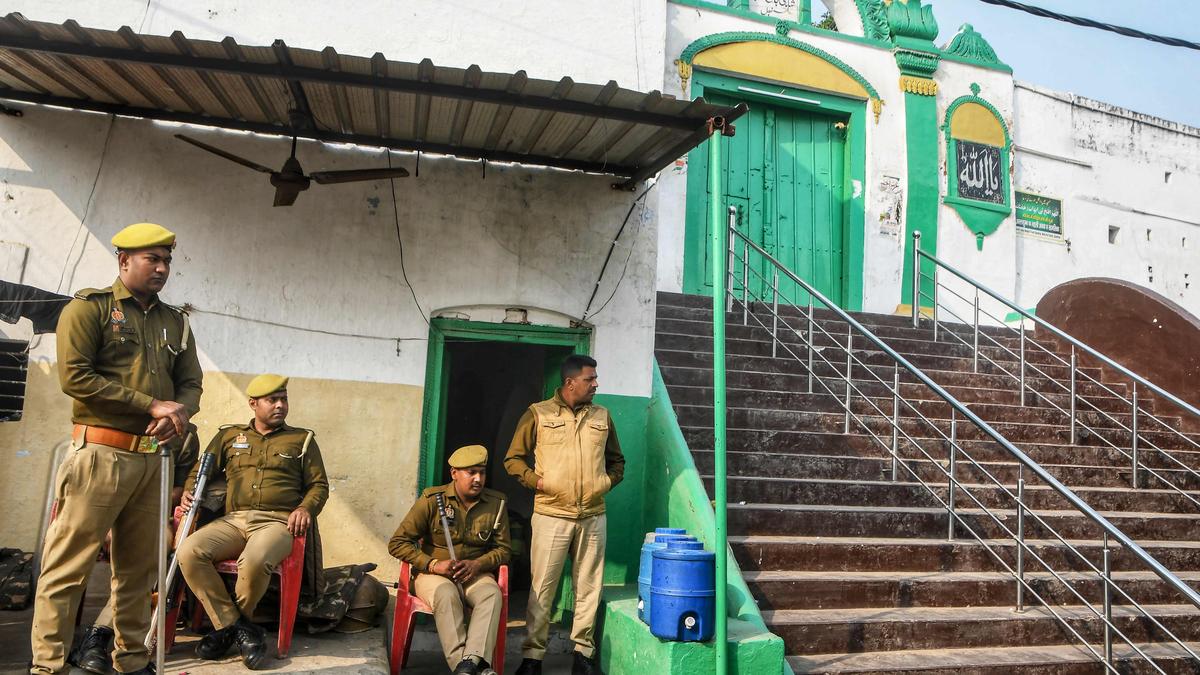
What is the controversy around the Sambhal mosque?
The Hindu
Sambhal mosque controversy
The story so far
A petition was filed by Hari Shanker Jain and others in the court of the civil judge of the district and sessions court, Sambhal on November 19. The petitioners alleged that the 16th Century Jama Masjid in Sambhal was built at the site of an ancient Hari Har Mandir. The claim was similar to those made in the case of Gyanvapi mosque in Varanasi and Eidgah Masjid Mathura in Uttar Pradesh and Kamal-Maula Masjid in Dhar in Madhya Pradesh. Mr. Jain is the petitioner in the Varanasi, Mathura and Dhar cases too. The Sambhal mosque is a protected national monument.
After a hearing on the same day, the civil judge ordered a photographic and videographic survey of the mosque and asked for its report to be presented before it on November 29. The mosque’s intezamia committee was not consulted by the court. Following the order, a survey team including the court-appointed advocate commissioner, Ramesh Raghav, arrived at the mosque post-Maghrib or sunset prayers. The survey was carried out peacefully in the presence of the Superintendent of Police, members of the mosque committee and Sambhal’s district magistrate.
However, a second survey carried out on November 24 led to large scale violence. Conducted in the morning, the survey team was preceded by a local mahant (priest), one of the petitioners, and followed by some members chanting Jai Shri Ram slogans. A police party accompanied the surveyors. A large number of protestors gathered near the mosque. It soon resulted in stone pelting from the crowd. The police allegedly resorted to opening fire in which five men, including two teenagers, died. The police denied the allegation, arguing it used lathi-charge and teargas to control the crowd. The local MLA, Ziaur Rehman Barq in turn rubbished the police claims, arguing the dead included unarmed persons who had gone out for their daily chores. The residents also alleged the police had ransacked their homes.
Unlike Ayodhya or Varanasi, the Sambhal dispute cropped up only this year. For centuries, people of different communities have lived peacefully here. The Jama Masjid in Sambhal is one of the three mosques built by Mughal Emperor Babur during his reign between 1526 and 1530; the other two being the mosque in Panipat and the Babri Masjid in Ayodhya which was demolished in 1992. The Sambhal mosque was built by Babur’s general Mir Hindu Beg around 1528. The mosque, as noted historian Howard Crane wrote in an essay titled, ‘The Patronage of Babur and the Origins of Mughal Architecture’ is “located on a hill at the center of Sambhal. It consists of a sanctuary formed of a large, square mihrab hall with battered walls, covered by a dome on squinches, and flanked by arches on north and south.” The mosque is built with stone masonry covered with plaster. Its façade is similar to the mosque in Budaun and quite removed from the latter Mughal monuments which were built largely of red sandstone. The mosque was repaired twice during the reigns of Jahangir and Shah Jahan in the 17th Century. While most historians attribute this mosque to Babur’s general Hindu Beg, some believe the mosque is actually a Tughlaq-era monument and the Mughal founder merely added certain features to its architecture.
The Hindu tradition, however, holds that the mosque incorporates parts of an ancient Vishnu temple. They believe the tenth avatar of Vishnu, Kalki, will descend here in Sambhal.
The Sambhal dispute has once again cast fresh spotlight on the Places of Worship Act 1991 under which the religious character of all places of worship as it existed on August 15, 1947, has to be maintained. The only exception was the then ongoing dispute around the Babri Masjid-Ramjanambhoomi. The Act was aimed at shutting out the possibilities of any further contestations around places of worship. It states, “An Act to prohibit conversion of any place of worship and to provide maintenance of the religious character of any place of worship as it existed on the 15th day of August, 1947, and for matters connected therewith or incidental thereto.” The Act’s Section 3 leaves no room for debate by clearly barring the conversion in full or part of a place of any religious denomination into a place of worship of a different religious denomination.











